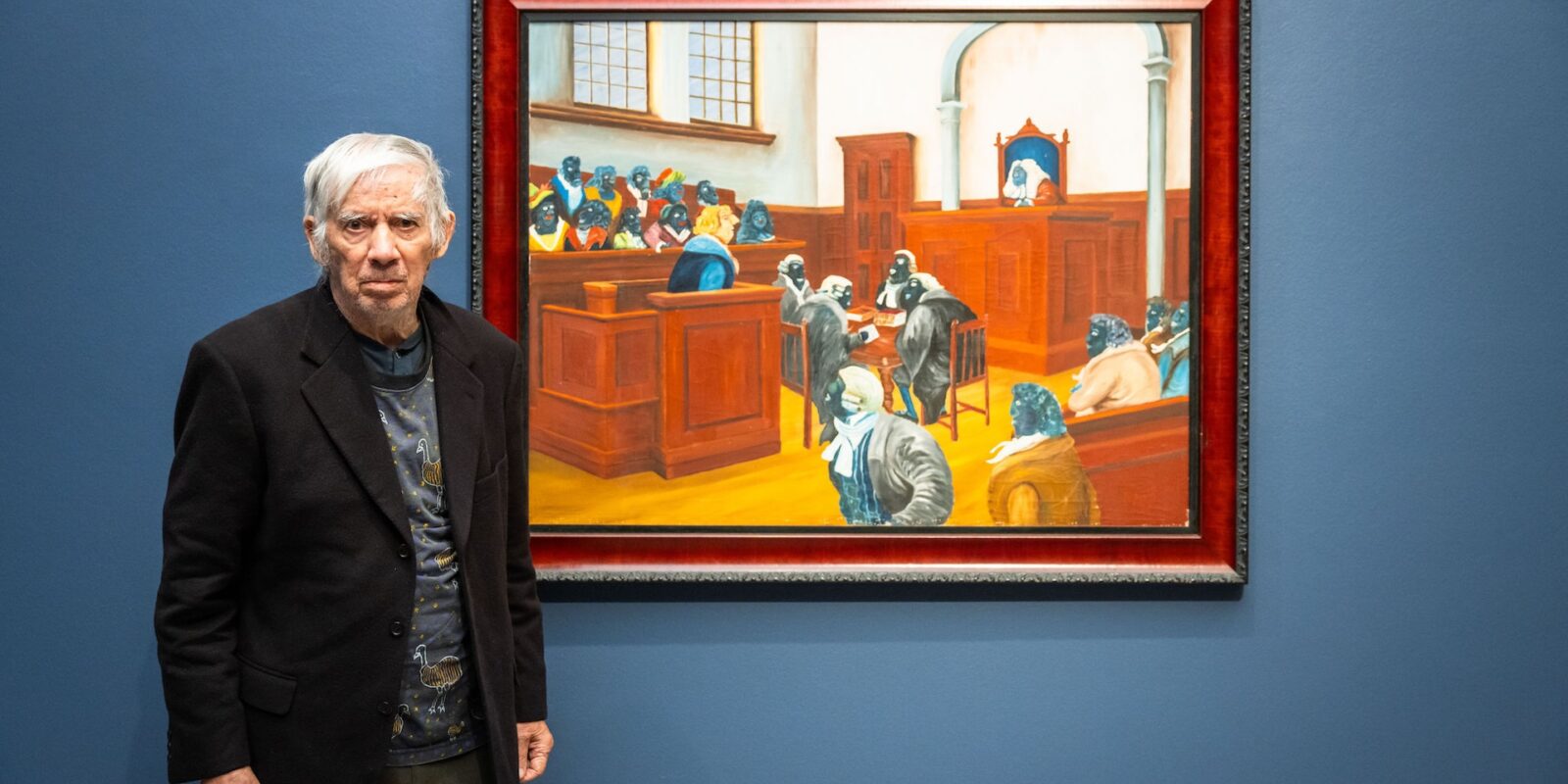
“I challenged the jury system of Australia. I asked that I be judged by my peers and your peers as your equals. I asked to have some Aboriginal people on my jury. One lawyer said that I wasn’t black enough to be black and the other lawyer said that I wasn’t white enough to be white. They then argued this point in front of me for some time. Both my parents were Aboriginal. It was such an insult to me and my family. I was judged by an all-white jury. I served a life sentence.”
– Uncle Gordon Syron
A pioneer of political urban art, Worimi and Biripi man Gordon Syron learnt to paint in prison and later told inmates at Bathurst prison that art had saved his life and sanity. His work Judgement by His Peers, painted in 1978 while serving a life sentence in Long Bay Gaol in Gadigal Nura/Sydney, highlights the bias against First Nations people accused of a crime by showing a white defendant in a courtroom full of black people including a black judge and jury. He intentionally reverses the experience of First Nations peoples whose traditional lore, which had been in place for tens of thousands of years, was overridden by British law.
As we reflect on the National Reconciliation Week 2025 theme, Bridging Now to Next, we invite you to reflect on the powerful artwork in Blak In-Justice: Incarceration and Resilience, presented in partnership with Heide Museum of Modern Art until 20 July as well as the 452 artworks presented in our annual exhibition Confined 16 at Glen Eira City Council Gallery until 22 June.
The stories told by First Nations artists in these two exhibitions urge us to realise that the solutions to systemic issues in Australia already exist within First Nations communities. However, the Australian Government and the broader community must commit to supporting self-determined pathways to justice – ones that prioritise cultural connection, healing and meaningful change – and ultimately ‘Bridge Now to Next’.
We invite you to make a meaningful contribution to reconciliation in Australia this week by supporting First Nations artists with lived experience of incarceration.
Take action by:
- Purchasing an artwork via our online shop or at Confined 16 (online sales are live from 8am on Friday 23 May!)
- Visiting our current exhibitions, Confined 16 (23 May–22 June) at Glen Eira City Council Gallery and Blak In-Justice: Incarceration and Resilience (5 April–20 July) at Heide Museum of Modern Art
- Make a tax-deductible donation to The Torch to support our continued investment into the lives of artists in prison and across our community
Thank you for standing with First Nations artists today.